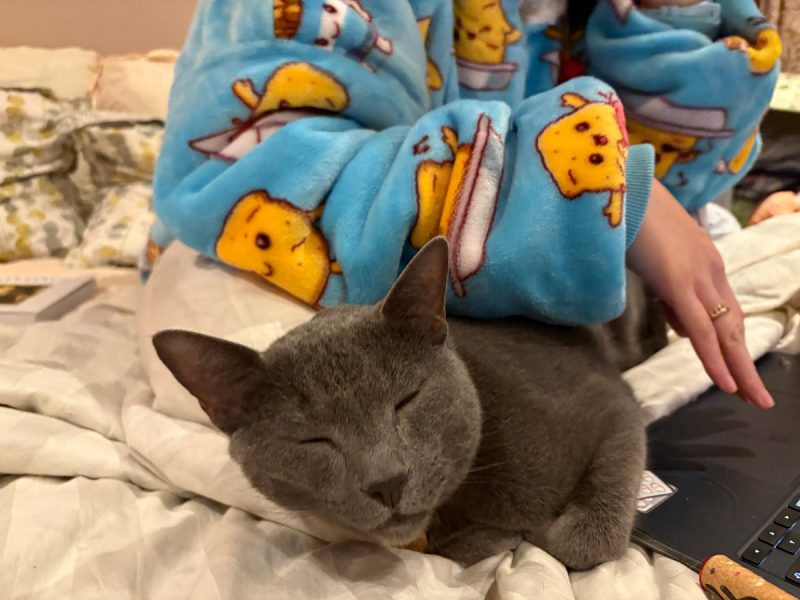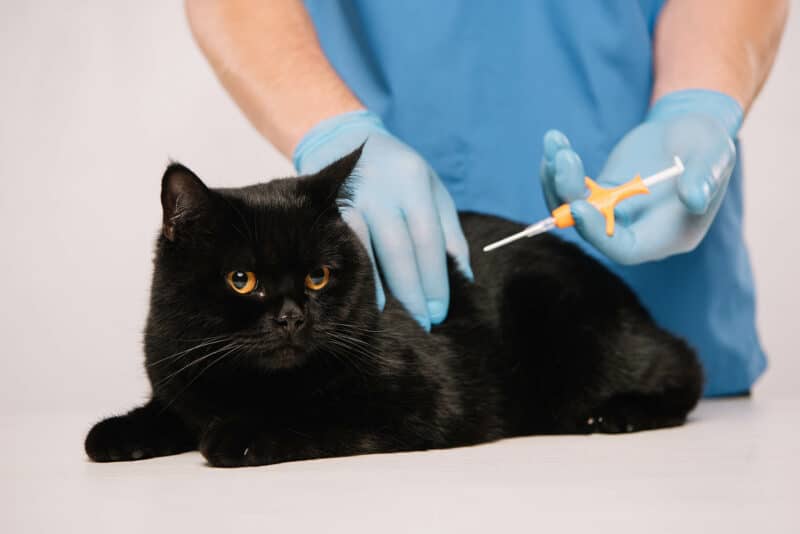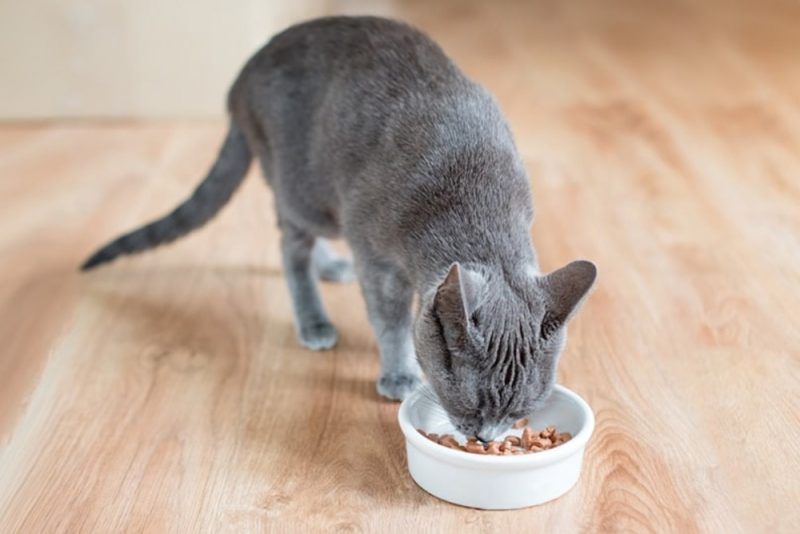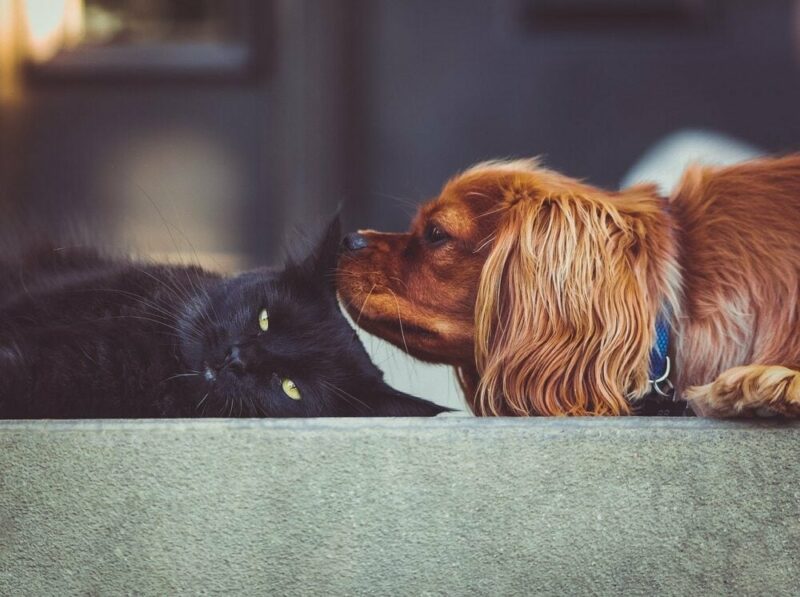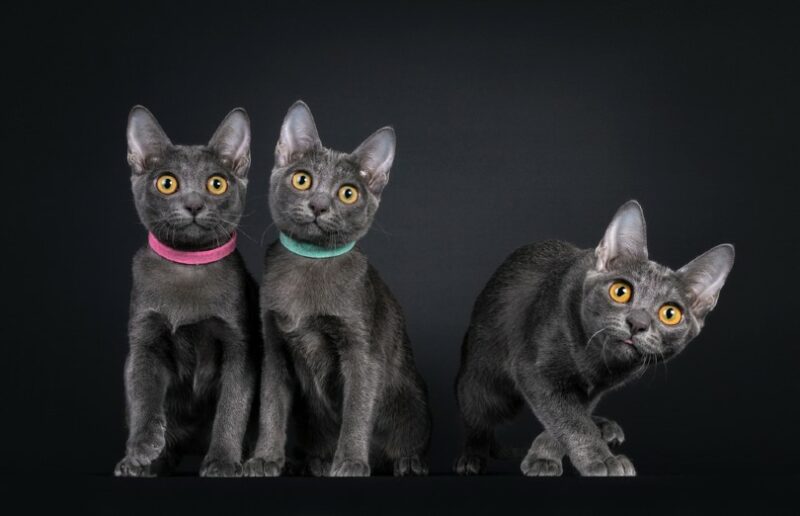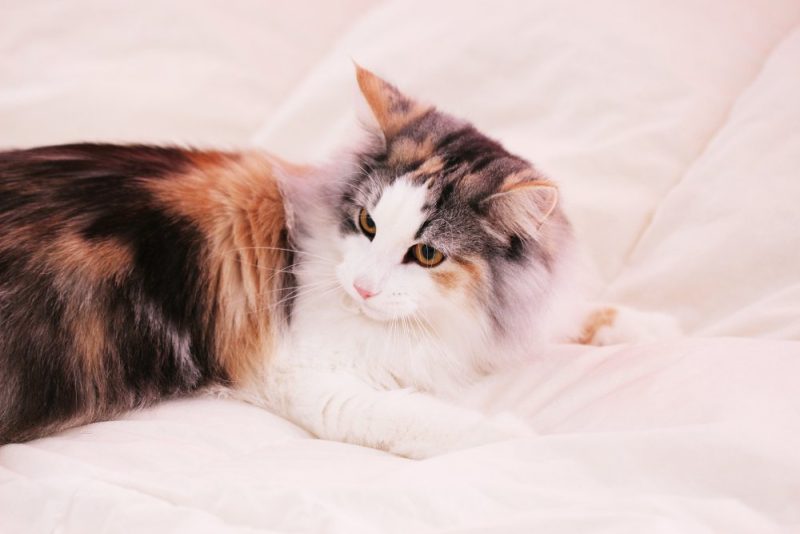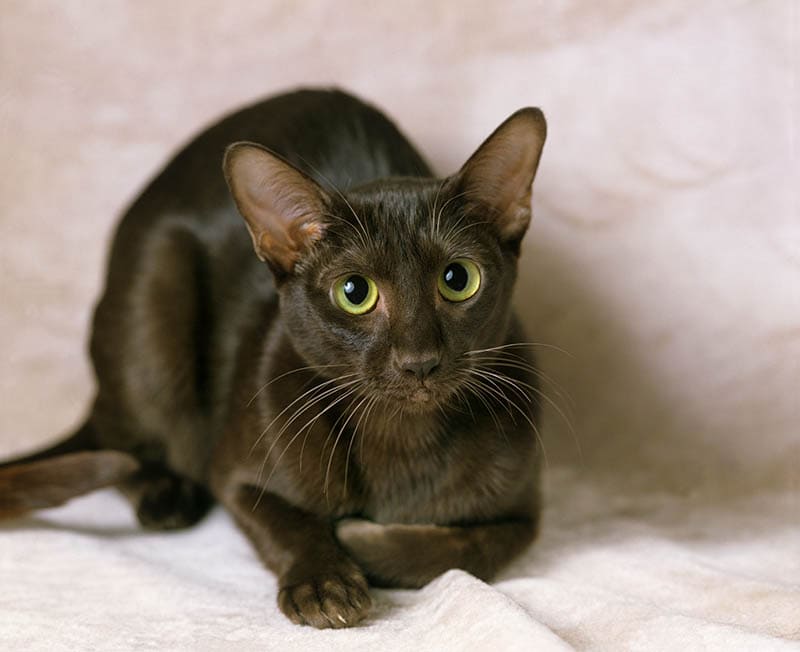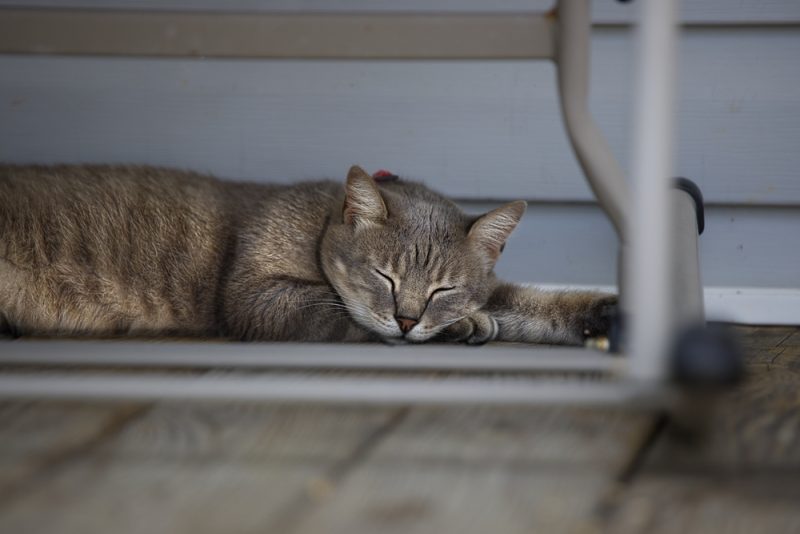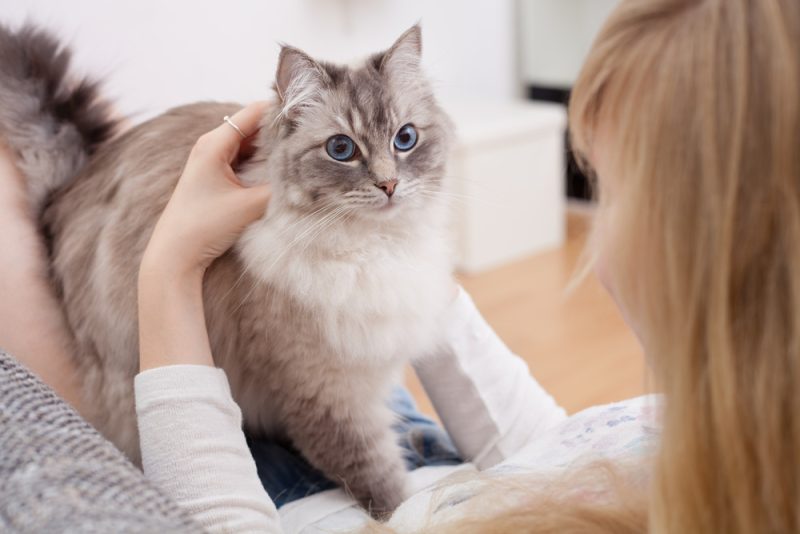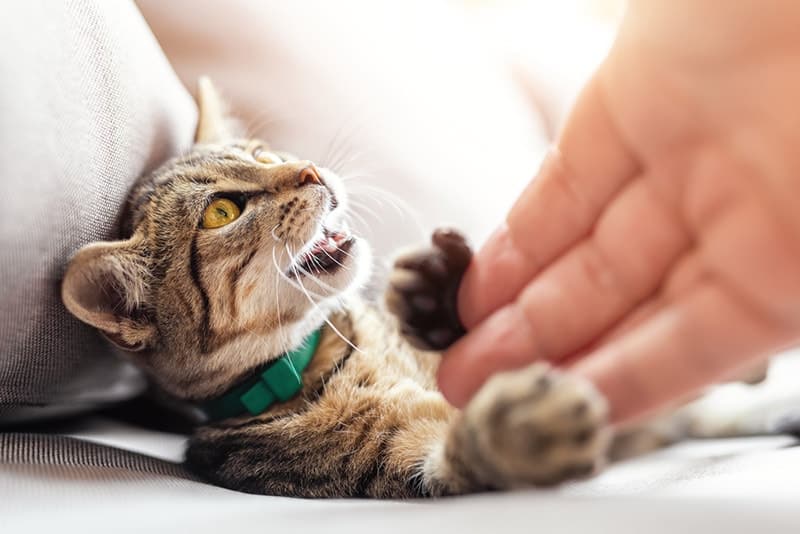In this article
Carbon monoxide poisoning can occur when any fossil fuel is burned in an enclosed area. Even just leaving your car running with the garage door closed for long periods is very dangerous for this reason. Carbon monoxide also comes from many household items, such as stoves, grills, fireplaces, furnaces, and lanterns.
Most of the time, it’s due to human error, such as leaving your cat in the garage with the car running, causing carbon monoxide poisoning in about 10 minutes.
Carbon monoxide poisoning is a lot more common than you’d first think. According to the Center for Disease Control (CDC), there are an estimated 400 yearly deaths due to carbon monoxide poisoning and thousands more emergency hospital visits due to this.1 Cats are known for showing signs of carbon monoxide poisoning before humans, so be sure to pay attention to your furry friend if you suspect a build-up of carbon monoxide for any reason.
The 3 Signs of Carbon Monoxide Poisoning
1. Drowsiness/Weakness
Many cats are naturally sleepy individuals, sleeping for most of the day. However, an extreme amount of sudden drowsiness can point to carbon monoxide poisoning. If your cat very suddenly changes modes from active to tired, then it could be carbon monoxide poisoning, especially if you suspect there to be a cause for it, such as a gas fireplace running indoors or your car being on in an enclosed space. Remember, carbon monoxide is a gas, meaning it can go through small spaces, making it possible for it to affect your entire house at once, especially if you have the air conditioning on.
Drowsiness and weakness are also common in cats when poisoned by carbon monoxide. This can show as the cat being unable to walk straight, not moving when prompted, or generally staying still for long periods.
As cats are known for sleeping away most of the day, it’s important only to note this sign when paired with other signs or when paired with carbon monoxide build-up suspicion, as it’s generally normal for cats. Lethargy and dizziness are not normal, but they may appear as if your cat is tired.
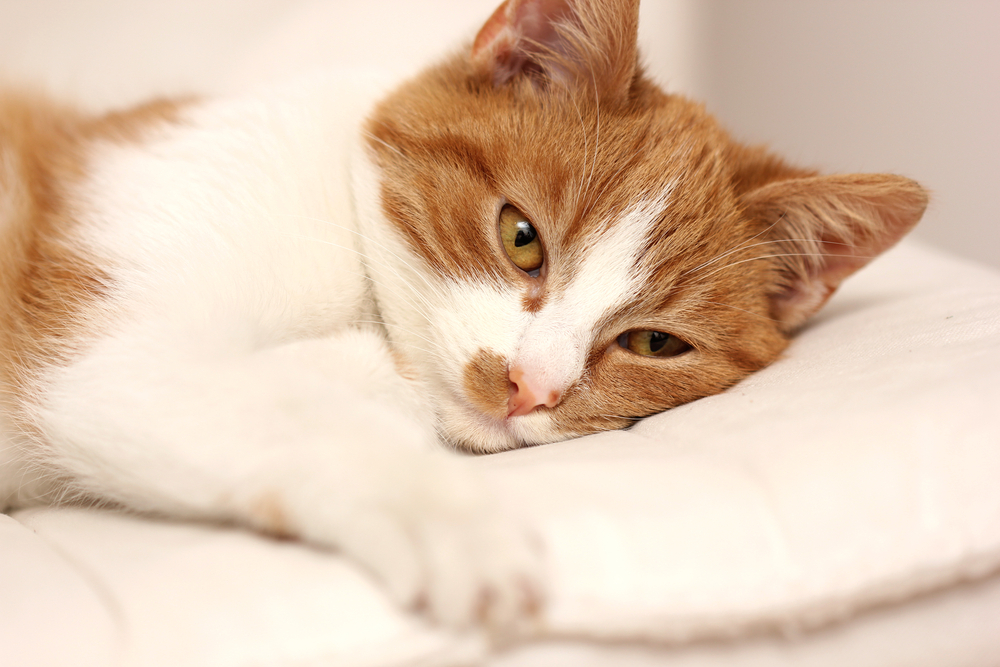
2. Seizures
Sometimes, cats will have seizures due to carbon monoxide poisoning. There are many different kinds of seizures in cats. For example, focal seizures only affect part of the brain, making the signs much less severe. Signs of focal seizures include twitching of the eyelids and/or face, drooling, abnormal head or neck movements, disorientation, and random or aggressive behavior. Your cat may be conscious during these situations, but they generally are not painful, just disorienting.
The worst kind of seizure is called a generalized seizure. During these seizures, your cat will be completely unresponsive, falling to their side and losing consciousness or shaking uncontrollably. They may also yowl as their throat muscles contract. Their bladder and bowels may also empty uncontrollably. These kinds of seizures tend to last anywhere from a few seconds to a few minutes.
Before having a generalized seizure, your cat may exhibit strange behavior, such as whining, shaking, or appearing nervous. They may also hide or seek you out, depending on the cat.
The best thing you can do during these seizures is to make sure the cat is in a safe and comfortable place out of harm’s way and wait until the seizure passes. Do not pick up the cat or put your hands/fingers near their mouth. If possible, take a video of the seizure to show the veterinarian later. Call the emergency vet immediately if the seizure lasts longer than 5 minutes.
No matter how long or severe the seizure was, you must take your pet to the vet if they don’t already have a diagnosed seizure-inducing disorder. You must be prepared to give the vet information, such as when it happened, how long it lasted, the signs your cat showed, and if anything strange happened to your cat before or after the seizure.
If you need to speak with a vet but can't get to one, head over to PangoVet. It's an online service where you can talk to a vet online and get the advice you need for your pet — all at an affordable price!

3. Difficulty Breathing
If your cat is subject to carbon monoxide poisoning, then they may have difficulty breathing. This difficulty, if caused by carbon monoxide poisoning, won’t be caused by something stuck in their throat or another cause, such as overheating or stress.
If this is the only sign you observe, you have to take them immediately to the emergency vet, as it could and will be life-threatening if it continues.
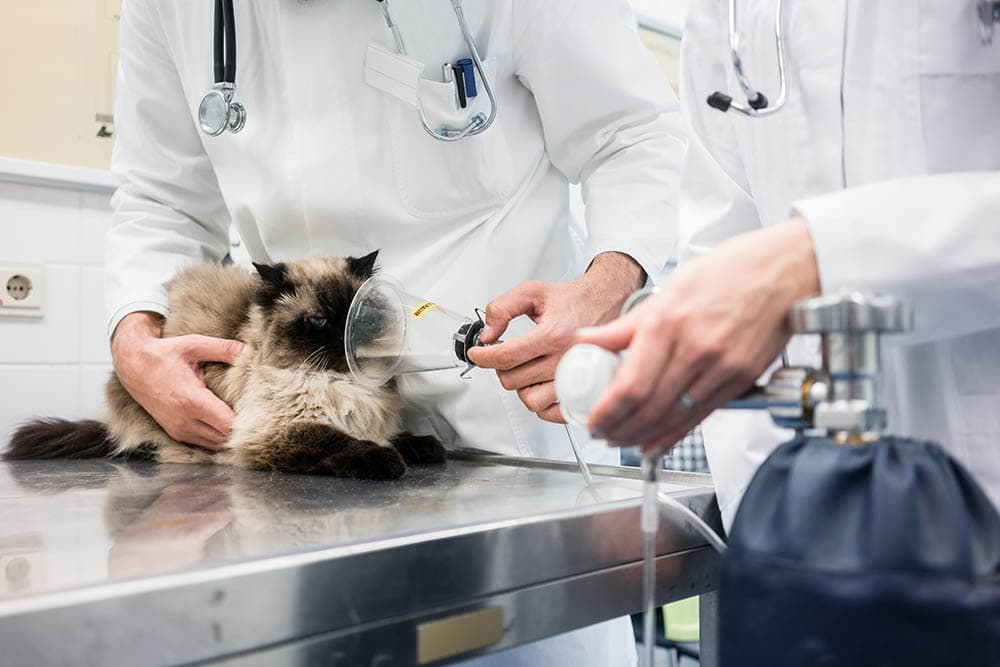
Signs of Chronic Exposure to Carbon Monoxide
The signs can differ if your cat has been subject to carbon monoxide poisoning multiple times in their life. Look for the following:
- They may experience flu-like signs such as nausea, loss of appetite, loss of energy, and a cough.
- They can also experience vomiting and eventually deafness and blindness in the worst of scenarios.
- There may also be an abnormally high level of acids in the cat’s blood, which will have to be checked by a veterinarian.
If your cat has experienced carbon monoxide once and survived, they are at a higher risk for worsened signs the next time it happens. You must ensure that all engines and gas-powered machinery are turned off or well-ventilated. Even something as simple as gas water heaters or poorly ventilated fireplaces or furnaces can cause even just mild carbon monoxide poisoning, which may be fatal to a cat that has been poisoned before. Again, most cases of carbon monoxide poisoning are due to human error, so make sure to be careful.
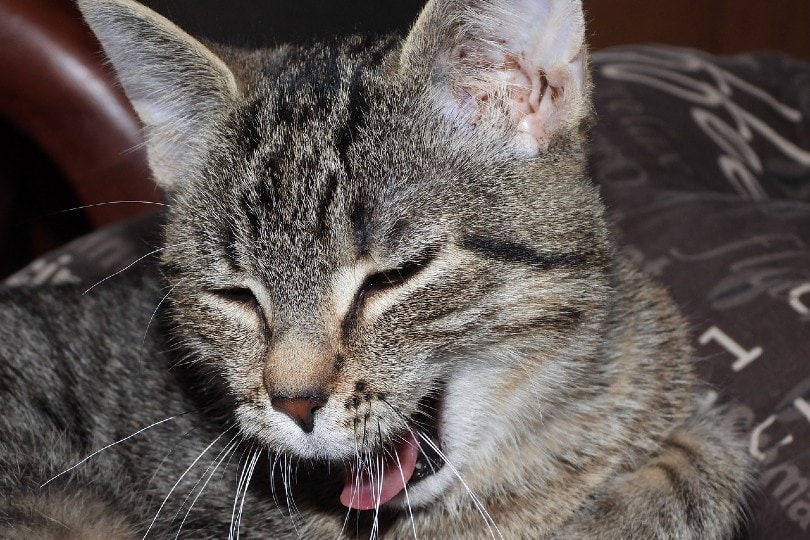
What Should I Do if I Think My Cat Has Been Exposed to Carbon Monoxide Poisoning?
This is considered an emergency, so you should take your cat to the vet as soon as you can. The vet can properly diagnose if your cat has been exposed. Here are some things that the vet will most likely do:
- Take an oral history to learn about potential exposure
- Conduct a physical exam
- Have blood drawn
- Take X-rays of the chest
- Administer oxygen based on physical exam
- Administer fluids intravenously
- A blood test will show the cat’s oxygen levels, chemistry, and pH levels.
How to Prevent Carbon Monoxide Poisoning in Your Home
As mentioned before, carbon monoxide poisoning is often the result of human error. The good news is that there are things you can do to prevent this from happening. The following tips will help keep you, your family, and your pets safe:
- Get a CO detector installed in your home. It is recommended that one CO detector be installed on each floor of the house. These detectors usually last for a few years, but check the batteries two or three times a year.
- Be aware of your gas appliances. If you have a gas stove or refrigerator, have them inspected by a qualified technician. Also, if you notice any gas odor coming from one of these appliances, open the windows and immediately contact a technician.
- If you have a fireplace or wood-burning stove, get the chimney checked for any blockage.
- Do not leave gas-operated vehicles running in confined spaces (like garages) or near open windows or open vents.
- Avoid using generators indoors. If you do run a generator, keep it at least 30 feet away from windows, doors, or open vents.
Conclusion
Carbon monoxide poisoning isn’t something you’d ever expect to experience, much less something for your cat to experience. It’s simply something that people don’t think about very often, and that’s not necessarily a bad thing. However, it becomes a problem when people are reckless and don’t put enough care into what they do. Even something as simple as a poorly ventilated grill or oven could cause carbon monoxide poisoning in cats, as their lungs are smaller and they breathe quicker than we do. Even just some kinds of heaters can cause carbon monoxide poisoning. If you leave your cat in the basement with a poorly ventilated heater, it could cause this fatal poisoning to occur in your cat.
Luckily, carbon monoxide poisoning can be treated by giving the cat supplementary oxygen and fluids at the vet, but even so, it can be fatal.
All in all, watch out for your beloved furry friends. Even a simple mistake can cause such detrimental things to happen to your cat. Put care into what you do with your cat, and make sure to keep your eye on them if something seems off. Even if nothing is wrong, it’s better to be safe than sorry.
See Also:
Featured Image Credit: IceEye, Pixabay



